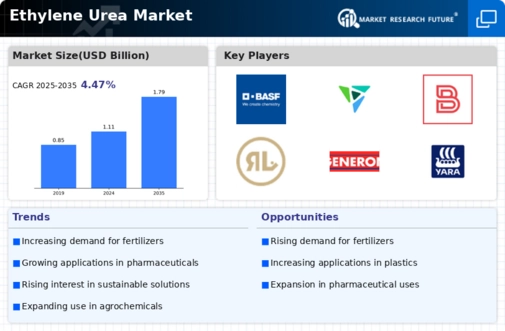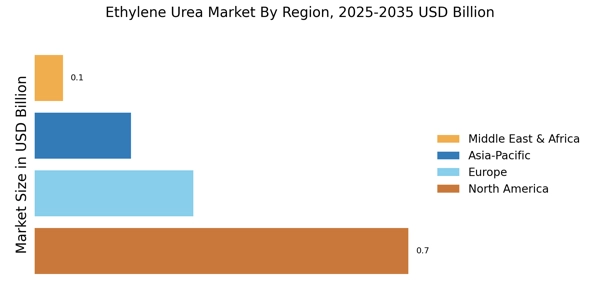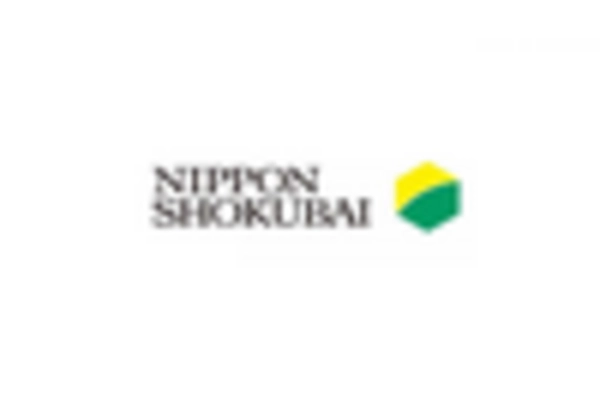Rising Demand in Agriculture
The Ethylene Urea Market is experiencing a notable increase in demand due to its application in agriculture, particularly as a slow-release nitrogen fertilizer. This compound enhances soil fertility and promotes sustainable agricultural practices. As farmers seek to improve crop yields while minimizing environmental impact, the adoption of ethylene urea is likely to rise. Recent data indicates that the agricultural sector accounts for a substantial portion of the ethylene urea consumption, with projections suggesting a growth rate of approximately 5% annually. This trend underscores the importance of ethylene urea in modern farming techniques, as it aligns with the global push towards sustainable food production.
Expanding Industrial Applications
The versatility of ethylene urea is contributing to its expanding applications across various industries, thereby bolstering the Ethylene Urea Market. Beyond agriculture, ethylene urea is utilized in the production of resins, adhesives, and coatings, which are essential in construction and manufacturing sectors. The increasing demand for high-performance materials in these industries is likely to drive the consumption of ethylene urea. Market analysis indicates that the industrial segment is expected to witness a compound annual growth rate of around 4% over the next few years, reflecting the compound's adaptability and relevance in diverse applications.
Technological Innovations in Synthesis
Technological advancements in the synthesis of ethylene urea are poised to drive the Ethylene Urea Market forward. Innovations in production processes, such as the development of more efficient catalysts and reaction conditions, have the potential to reduce production costs and enhance product quality. These improvements may lead to increased output and a more competitive market landscape. Furthermore, the integration of automation and digital technologies in manufacturing processes could streamline operations, thereby increasing the overall efficiency of ethylene urea production. As these technologies continue to evolve, they are likely to attract investment and foster growth within the industry.
Environmental Regulations and Compliance
The Ethylene Urea Market is also influenced by stringent environmental regulations aimed at reducing chemical runoff and promoting sustainable practices. As governments implement policies to mitigate environmental impact, the demand for eco-friendly fertilizers like ethylene urea is likely to increase. This compound's ability to provide nutrients efficiently while minimizing leaching makes it an attractive option for compliance with these regulations. The market may see a shift towards products that align with environmental standards, potentially leading to a rise in the adoption of ethylene urea in agricultural practices. This trend suggests a growing awareness of sustainability among consumers and producers alike.
Growing Awareness of Sustainable Practices
There is a rising awareness of sustainable practices among consumers and producers, which is positively impacting the Ethylene Urea Market. As stakeholders become more conscious of the environmental implications of traditional fertilizers, the demand for alternatives like ethylene urea is likely to grow. This compound's slow-release properties not only enhance crop productivity but also reduce the risk of nutrient runoff into water bodies. Market trends indicate that the shift towards sustainable agriculture is gaining momentum, with ethylene urea positioned as a viable solution. This growing consciousness may lead to increased investments in research and development, further propelling the market forward.


















Leave a Comment